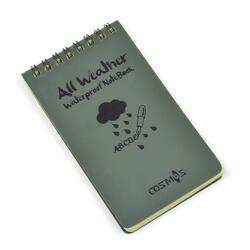The biggest issue uncovered is poor communication. Safety managers are concerned that employees will lose respect because of their communications skills.

Having mission and values statements are useless without communication. Building and authoring a safety program is useless without communication to tell others what is in it. Safety certification is useless without communication skills to pass along what they know.
In preparing for my clients’ safety events, the biggest issue uncovered is poor communication. Safety managers admit that safety meetings are boring and lack any appeal for employees. That makes buy-in difficult. Safety managers are concerned that employees will lose respect because of their communications skills.
Issues like supervisor training (management skills), turnover and employee engagement are also a concern. They too are communication issues.
If you want to inject new life into your safety program, you have to make changes. Here are three specific areas you need to refine and change if you want to win the hearts and minds of employees in the safety program:
1Threat-of-injury does not encourage safety.
Injury has nothing to do with safety. Stop showing the injury videos. Stop showing photos of severed limbs. Stop allowing injury-survivors to speak to your people. Stories from 30 years ago, or incidents from unrelated industries, have no relevance. The processes have improved. The procedures are better. Although you can learn from the past, it doesn't mean you must re-live it. Shock doesn't work long-term. Using injury to threaten people into compliance means your prime communication skill is fear. Workers don’t want to come to a fearful workplace.
When learning to drive, you are not shown videos of being hit head-on by a bus. The purpose of driver training is not to make you afraid to drive. The purpose is to give you the confidence to make good decisions. Failure is not a motivator. People want to work in a place where they feel cared for and protected - not one where they feel in danger. Talk about how safety gets you the things you want from life.
2“Safety First” isn’t real.
Why say it? To claim “safety first” means that you have priorities. Well, priorities change. “Health Of The Company First” would be a better descriptor because, without money, there is no company. Then, there is no need for the safety program. A few brave and committed companies offer a “people first” philosophy. They also back it up with how they care for, train, protect, choose and promote their own people. They care about their families, get to know them, and celebrate the good work their good people do often.
“People first” includes the communities in which they live. These companies are good neighbors and charitable supporters. Their safety program includes slowing down on dusty roads to raise less dust. They close pasture gates when they see one open and work as rural crime watch advocates. Respect and courtesy are at the forefront of their safety initiatives. Every strong safety culture has respect and courtesy at the foundation. So why not shift to a “Courtesy First” safety initiative. Courteous people care for and look out for their co-workers and neighbors.
3Drive-by safety meetings must stop.

A drive-by safety meeting is one that no one needs to remember. You ask your meeting attendees to do nothing, except sit through it. You don’t engage them with paper and pen. You don’t ask them to write anything down. You don’t encourage any discussion and you certainly don’t want their opinions. You, instead, lecture them. You prepare one boring PowerPoint slide after another and numb their minds. Their eyes glaze and you force them to mentally escape. You don’t talk about what’s in it for them. You talk about inspections and reports and near-misses.
What you should be doing is buying flip notebooks for each of your employees. Encourage them to write down their ideas to improve safety while they’re on the job. They should be writing down thoughts to improve processes and equipment. They should be writing down inspiring things they hear in safety meetings. They should be taking notes to improve their small crews. When they see something that deserves recognition, they will write it down.
If employees don't participate in safety, they will resist buying-in to the safety program. Engage them to engage themselves.
Employees will engage in safety in direct proportion to how well their safety supervisor engages them. As safety personnel, your job is to not penalize your people as much as it is to coach better performance out of them. Get better at communication now to save your safety program.
Kevin Burns is a management consultant, safety speaker and author of "The Perfect Safety Meeting". He delivers engaging and entertaining keynote safety presentations for everyone: from front-line staff to senior management. He helps people see the light when it comes to buying-in to the safety program.



